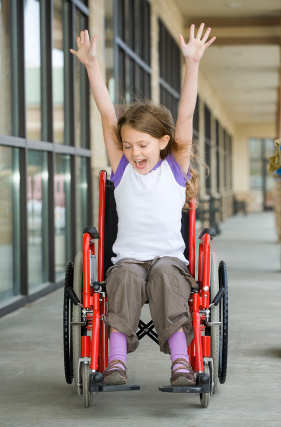There is a time when I advocated or my child that stands out in my mind and I want to share the story with you.
Eric was about 3 years old and we were at the hospital for a g-tube insertion. He had been having frequent lung infections and after investigation, it was discovered that when he drank, some of the liquid would go into his lungs. The remedy was to have a g-tube inserted so that all of his liquids would go directly to his stomach and keep his lungs healthy.
The procedure was successful and we prepared to go home.
Part of the discharge planning was to purchase a g-tube pump. The medical folks wanted to send us home with an IV pole and a pump. “What?” I questioned. This would mean that Eric would be attached to an IV pole for a good portion of his day. As you can imagine, hooked up to a pole all day would be awkward and most likely you aren’t going too far.
This wasn’t going to work. Not for Eric, nor for us.
You see, Eric went to preschool every day and when he wasn’t there, he liked to be active. Whether going for a ride in the car, taking a walk in the neighborhood, visiting family or attending gymnastics, he liked to be on the move.
In addition, the IV pole was a representative of a sick patient; someone who needed treatment. While Eric had a disability, he certainly didn’t want to be confined. This was a 4-year-old child, with a life to live.
I expressed my point of view to the discharge coordinator and let her know that the IV pole wasn’t going to work. The response was, “the funding from the Ministry of Health will only cover the cost of a non portable pump.”
In a calm and confident voice, I said, “Eric is active. He goes to school and he loves to get out of the house. He cannot be restricted. He has a disability but that doesn’t mean that he isn’t part of the outside world. There has to be another solution,” I appealed.
An hour later, the coordinator returned and said that there was a portable pump that would be housed in a back pack and it could be attached to the back of Eric’s wheelchair. Perfect, I thought. “This way, he could be at school or any other place while receiving his nutrition via g-tube.”
We would have to wait an extra day to see if the funding would be approved.
“It must be approved,” I said. “So far, he has been very accommodating to the system, it’s time that the system accommodates him.”
Later that same day we found out that the funding for the portable pump had been approved and we would have it within 24 hours. Great news!
I reflected on what had occurred and what I had learned. There is a fixed order of business when it comes to health care, social support and education. People who work in human services only know what they know.
To the contrary, life is not static; we live under continuous change. It’s up to us, as families, to offer what we know; to share our perspective and to help others understand the reality of our lives.
Advocacy is helping others to see the human side of our lives and to place people at the core of their work.
Here are some guidelines to help with your efforts:
- Have a plan for what you want to say and rehearse it before you meet
- Share your story in a way that helps others to visualize and relate to you and your family’s situation
- Believe in what your point of view
- Make an attempt to understand another perspective
- Explore mutual beliefs and strengthen what you have in common
- Keep in mind that every family situation is different and that you want a solution that works for your child and family
- Do not become angry or show disrespect, no matter how frustrated you become
- And remember…..
Asking for what you want, is not asking for too much!








Get Social